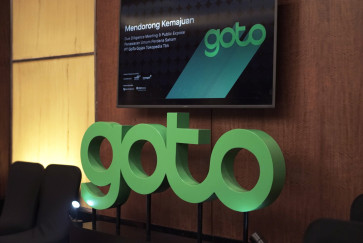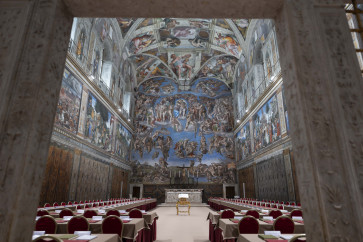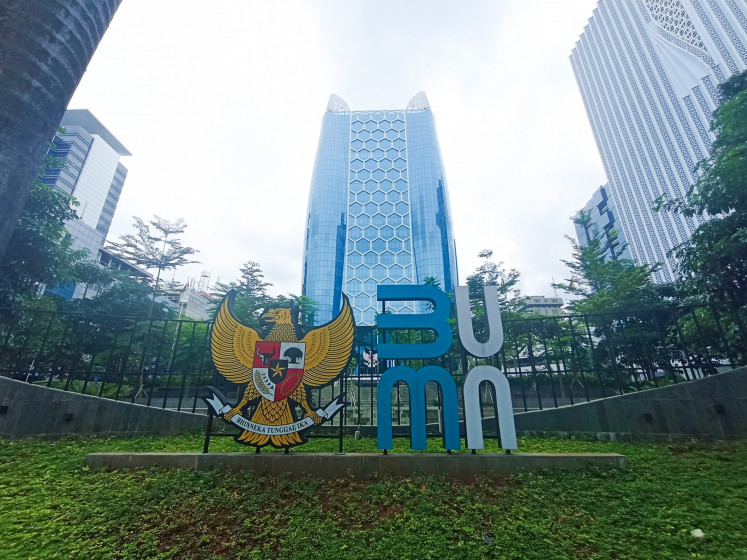Beauty and stories: Inside the archipelago's venerable temples
Temple stories: A book titled The Old Chinese Temples in Indonesia aims to present the countryâs Chinese religious heritage and traditions
Change text size
Gift Premium Articles
to Anyone

T
span class="caption">Temple stories: A book titled The Old Chinese Temples in Indonesia aims to present the country's Chinese religious heritage and traditions.
The Old Chinese Temples in Indonesia takes readers on a tour inside the country's historical temples.
Through architecture, ornaments and statues of deities placed on altars, the temples of Indonesia whisper their countless stories.
The tales range from the first wave of Chinese migration to the archipelago, the arrival of famed Admiral Cheng Ho and the relationship between one Islamic leader and the Chinese community.
Asti Kleinsteuber, former presidential palace dancer and prolific author, chronicles the remarkable stories in her book, The Old Chinese Temples in Indonesia. Through its 400 full-color pages, the tome leads us to Confucian, Taoist and Buddhist temples across Java, Bali, Palembang and Bagansiapiapi in Riau.
Inside the Da Bo Gong Temple in the coastal area of Ancol in Jakarta, the faithful place their burning incense before the statues of Sam Po Soei Soe and his wife in the main altar.
Sam Po Soei Soe was the cook of Admiral Zheng He, better known as Cheng Ho, who anchored his Chinese fleet in the archipelago in the 1410s. Like the admiral, Sam Po Soei Soe and his Javanese wife, Sitiwati, were Muslims. Their tombs are located inside the temple complex.
Built in 1650 by Captain Lim Tim Teng Tjau, Da Bo Gong Temple is the oldest Chinese temple in Jakarta, and both those of Chinese descent and local Muslims are regular visitors.
'It is believed that the gods there would be furious if anyone left an offering of pork, because they are Chinese Muslim,' Asti writes.
Among its eight buildings, the temple hosts altars for deities bearing Malay names: Embah Said, the god of land, and Ibu Neng, the mother of purity.
Following a nationwide trend, Da Bo Gong Temple has changed its name to Wihara Bahtera Bakti.
According to the book, many Confucian temples adopted the term wihara, which means Buddhist monastery, to comply with the government's decision in 1965 to recognize only five official religions, excluding Confucianism.
In line with the monotheism enforced by the government, numerous temples adopted the name of one main god.
Asti, who has written books on etiquette, historical mosques and the prevention of drug abuse, conceived the book with her team to showcase the dynamic relationship between Chinese communities in Indonesia through the years.
'Our team is very interested in the historical relics of our country,' Asti wrote. 'In this book, we feature old temples, which are numerous and spread all over Indonesia.'
Written in three languages (English, Indonesian and Chinese), the first chapters of the book provide detailed explanations of the history of Chinese migration to Indonesia, the architectural principles of Chinese temples and the ceremonies conducted therein.

Indonesians calls Chinese temples klenteng, taken from klinting-klinting, an onomatopoeic word describing the chimes of a temple's bells.
Asti begins the work with an exploration of the temples in Java, including Hud Cow monastery in Tangerang, Banten.
Located not far from the historical Spelwijk Fortress, the temple serves as a monument to the close relationship between the Banten Kingdom and early Chinese settlers. It is believed that the temple was initiated by Syekh Syarif Hidayatullah, also known as Sunan Gunung Jati ' one of the nine spiritual leaders who first spread Islam across Java.
Sunan Gunung Jati, who was married to a Chinese woman, built the temple in the 16th century after realizing that there was no place of worship for Chinese settlers in the area. The original name of the temple was Avalokitesvara.
Hud Cow, which retains a classical statue of the Goddess Kwan Im from the Ming Dynasty, caters to followers of Confucianism, Taoism and Buddhism.
Sam Po Kong temple in Semarang, meanwhile, stands on the spot where Admiral Cheng Ho first landed in Java. Every first and 15th day of the month, a prayer session is held in remembrance of Cheng Ho.
A unique tradition is found in the 270-year-old Chandra Nadi temple in Palembang, where temple officials provide a bucket full of numbered bamboo sticks used not only for fortune telling but also medicinal purposes. The cylinder bucket is shaken until one stick jumps out of the bucket; the number indicates the code of a certain medicine sold at an appointed drugstore.
On Chinese New Year, locals hold a parade starting from Chandra Nadi to the pagoda temple on Kemaro Island in the Musi River.
Hok Kiong temple in Bagansiapiapi is as old as the city itself. Chinese settlers built the Confucian temple in 1875, shortly after they founded the city.
Every fifth month of the lunar year, the temple is the center of the Go Ge Cap Lak celebrations commemorating the arrival of the first group of Chinese immigrants group in Bagansiapiapi.
The book provides explanations in three languages, though it is noticeable that there are slight variations; certain paragraphs included in the Indonesian explanation are not included in the English, and vice-versa.
The real beauty in the book, though, is to be found in its photographs, which entrance the reader with their visual celebration of the grand, red-dominated temples.

' Photos courtesy of The Old Chinese Temples in Indonesia









